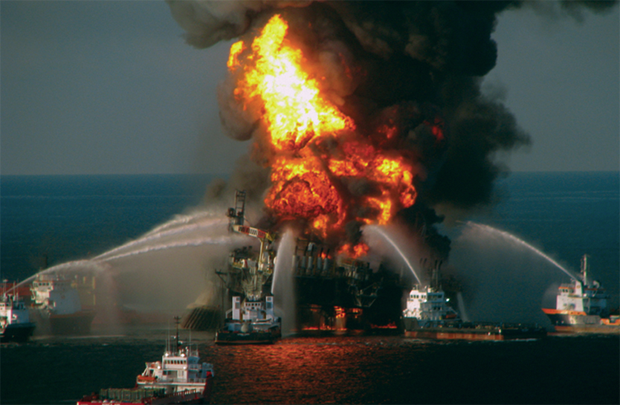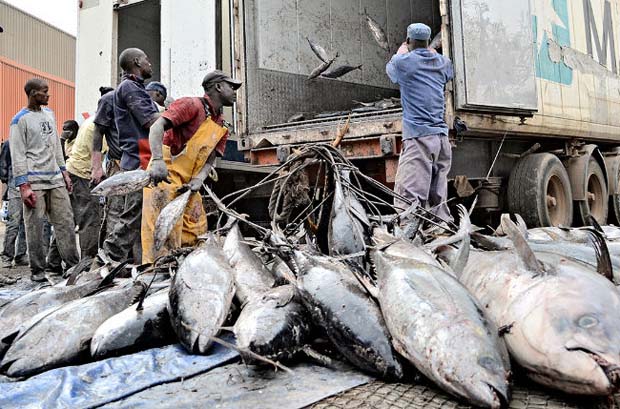
It happens. It will Happen. It did happen.
BP Horizon tragedy. NOAA image.
Creating an Ocean Policy
[dropcap]T[/dropcap]hirty-three years ago, President Ronald Reagan established the U.S. Exclusive Economic Zone (EEZ), stretching 200 miles out from our shores. At 3.4 million square miles, it’s more extensive than our continental landmass. But unlike our lands, our public seas belong to all of us, and right now they are in trouble.
The ocean is at risk from a cascading series of environmental disasters including industrial overfishing, pollution, loss of coastal and offshore habitats, and climate change. Faced with these threats, it’s hard to fathom why this crisis in our seas has received no attention in the 2016 presidential campaigns.
Hillary Clinton has pledged not to drill for oil in the Arctic Ocean or off the Atlantic coast but has no position on the Gulf of Mexico, where 17 percent of domestic oil production takes place. By calling the science of climate change a hoax, Donald Trump has made it clear that he’d be unlikely to address climate-linked ocean threats such as sea level rise, ocean acidification, and harmful algae blooms intensified by warming ocean waters—such as we’re now seeing on the coasts of Florida.
Yet there are commonsense steps the next president could and should take to help restore the blue in our red, white, and blue
The next president should expand on the modest National Ocean Policy initiated by President Barack Obama in the wake of the BP blowout disaster. Ideally, the new policy would eliminate federal agency conflicts and redundancy in ocean management. It would combine the best available science with public input to identify how to better utilize limited ocean spaces. Some examples might include relocating shipping lanes to reduce ship strikes on migrating whales, choosing offshore wind farm and aquaculture sites so they don’t impact local fishing grounds, and protecting unique marine habitats and wildlife while also maintaining naval warfare training zones and fiber-optic cable laying. Former U.S. Coast Guard Commandant Admiral Thad Allen describes this as “putting urban planning in the water column.”
The small minded will always be with us
The next administration should also continue to promote best fisheries and aquaculture management practices to sustain living resources and the jobs that go with them. Since its conservation-oriented reforms in 2006, the Magnuson-Stevens Fishery Act has seen two-thirds of U.S. overfished stocks rebuilt or improved. As they recover, there is increased political and commercial pressure to go back to over-exploiting the resource. When the act comes up for reauthorization this year, it should be strengthened—not undermined—so that the United States can remain a leader in reducing global fishing pressure.
Yes, there are still pirates at sea
The United States also needs to continue to lead in the fight against illegal, unregulated, and unreported (IUU) pirate fishing, which accounts for up to a third of fish caught and also often involves the use of slave labor. Last year, the largest citizen lobby for ocean conservation in U.S. history successfully lobbied for passage of a bipartisan IUU Fishing Enforcement Act, which, among other things, will allow better remote tracking and seizure of pirate vessels when they pull into ports. A similar citizen lobby will take place this spring as part of a biennial Blue Vision Summit that the Sierra Club participates in.
NOTE: Featured Image: Fishermen load tuna in Dakar, Senegal, bound for the European market. Photo: Kukka Ranta


